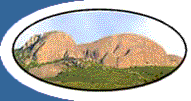Engela DuvenageFor the past two years, Grade 10 life science learners from Weltevrede Secondary School in Wellington have made a valuable contribution to science through their regular ant sampling exercises on their school grounds.
The results of the ant sampling project they have been involved in, is to appear in three peer-reviewed international scientific journals.
The research forms part of the ‘Iimbovane: Exploring South African Biodiversity and Change’ outreach project, which, despite its strong focus on environmental education, also aims to extend what is already known within the scientific community about ants in the Western Cape.
Weltevrede is one of thirteen schools in the province to take part in the project, which is managed by the Centre for Invasion Biology at Stellenbosch University (CIB), in conjunction with the University of Sheffield in the United Kingdom.
Funding is provided through the Darwin Initiative, a British grants programme.
The project, which means “ants” in isiXhosa, assists learners to investigate the distribution of ants as indicators of biodiversity in both pristine and modified landscapes.
At present, a strong focus is placed on the life sciences learning area, but it is hoped to integrate the work sheets and other material provided to the participating schools to also make it applicable for teaching in mathematics, geography and languages, says Kirsten Mahood, outreach manager for Iimbovane.
Learners are given the opportunity to work together with ecologists in the field and classroom to collect and analyse data, and to experience science in a research environment while remaining curriculum focused.
Twice a year they help to set pitfall traps around their school grounds and to do vegetation surveys. After five days, the traps are collected and the ants found are sent to the Iimbovane laboratory at Stellenbosch University for identification.
The schoolgrounds around Weltevrede is one of the modified urban landscapes which is sampled during the project, while the nearby Hawequas Scout Farm, situated within a rich fynbos area, serves as the more pristine control site.
Similar sampling and control sites are found all around the Western Cape at participating schools, including Franschhoek, Riviersonderend, Beaufort West, Oudtshoorn and Cape Town.
“Compared to the wealth of knowledge about the renowned floral diversity of the Cape Floral Kingdom, as well as about its mammal and bird species, very little is actually known about the insects found here,” says Mahood.
In total, the Iimbovane project has collected 158 ant species in the 33 collection sites that are sampled in the Western Cape.
So far, the Wellington learners and the Iimbovane researchers have collected 11 ant species on the Weltevrede school grounds, which, according to Mahood, is average for disturbed areas.
Two species, the indigenous seed collecting Tetramorium quadrispinosum, and the invasive Argentine ant (Linepithema humile), dominate the Weltevrede site.
“The Argentine ant is associated with human disturbance such as developed areas, while Tetramorium quadrispinosum probably thrives because of the grassy area around the school where it can collect enough seeds,” she explains.
The Hawequas site has seen above average diversity, with 21 ant species being collected so far.
“We find quite a high diversity in the genus Pheidole here, which are quite a difficult group to tell apart,” Mahood describes the difficulties sometimes experienced in making adequate species identifications.
The results of the research being done over the past two years are currently being compiled by Dr Brigitte Braschler, Iimbovane’s chief researcher from the University of Sheffield.
The first of the peer-reviewed articles, to be published in an international scientific journal, is expected to appear by March next year.
“It is exciting to realise that through their surveys the young learners are making a valuable contribution to science,” Mahood says.


